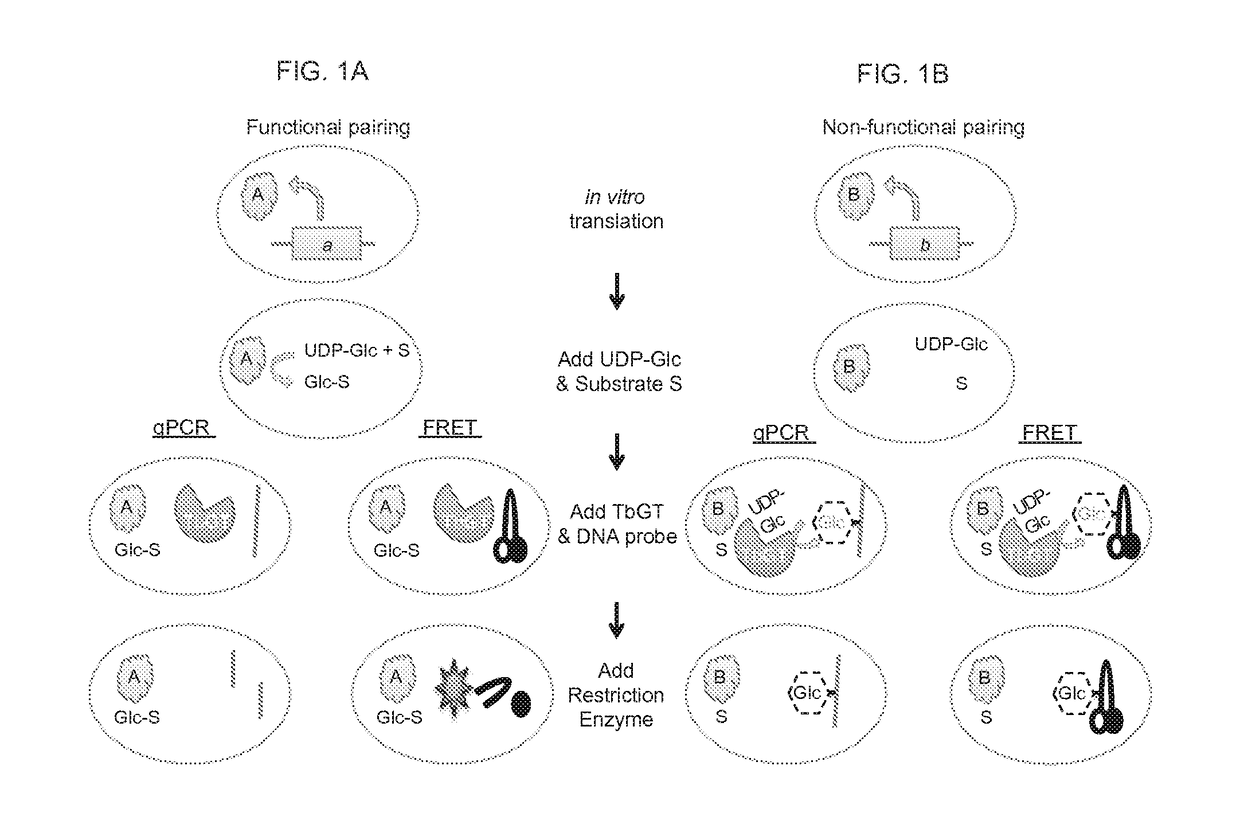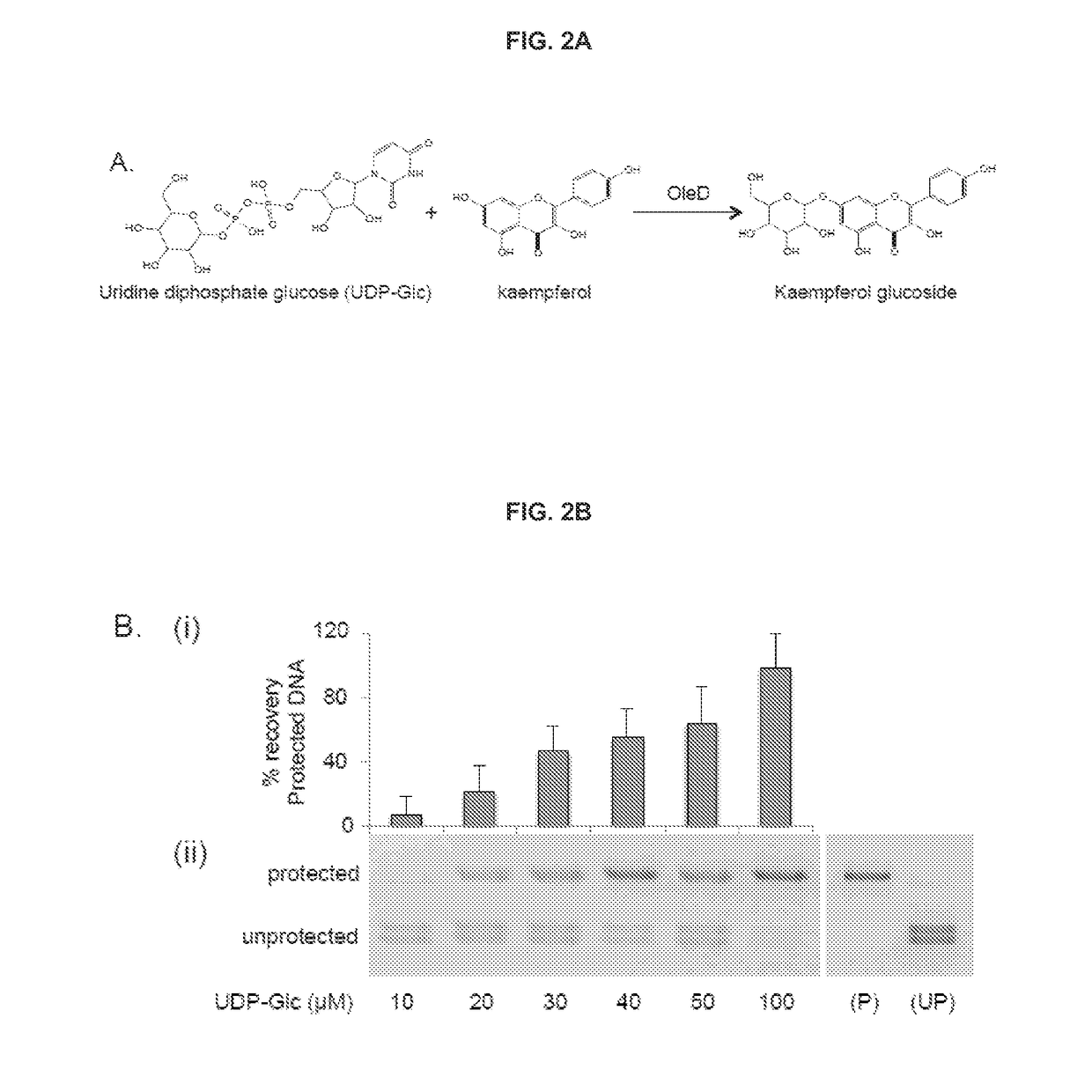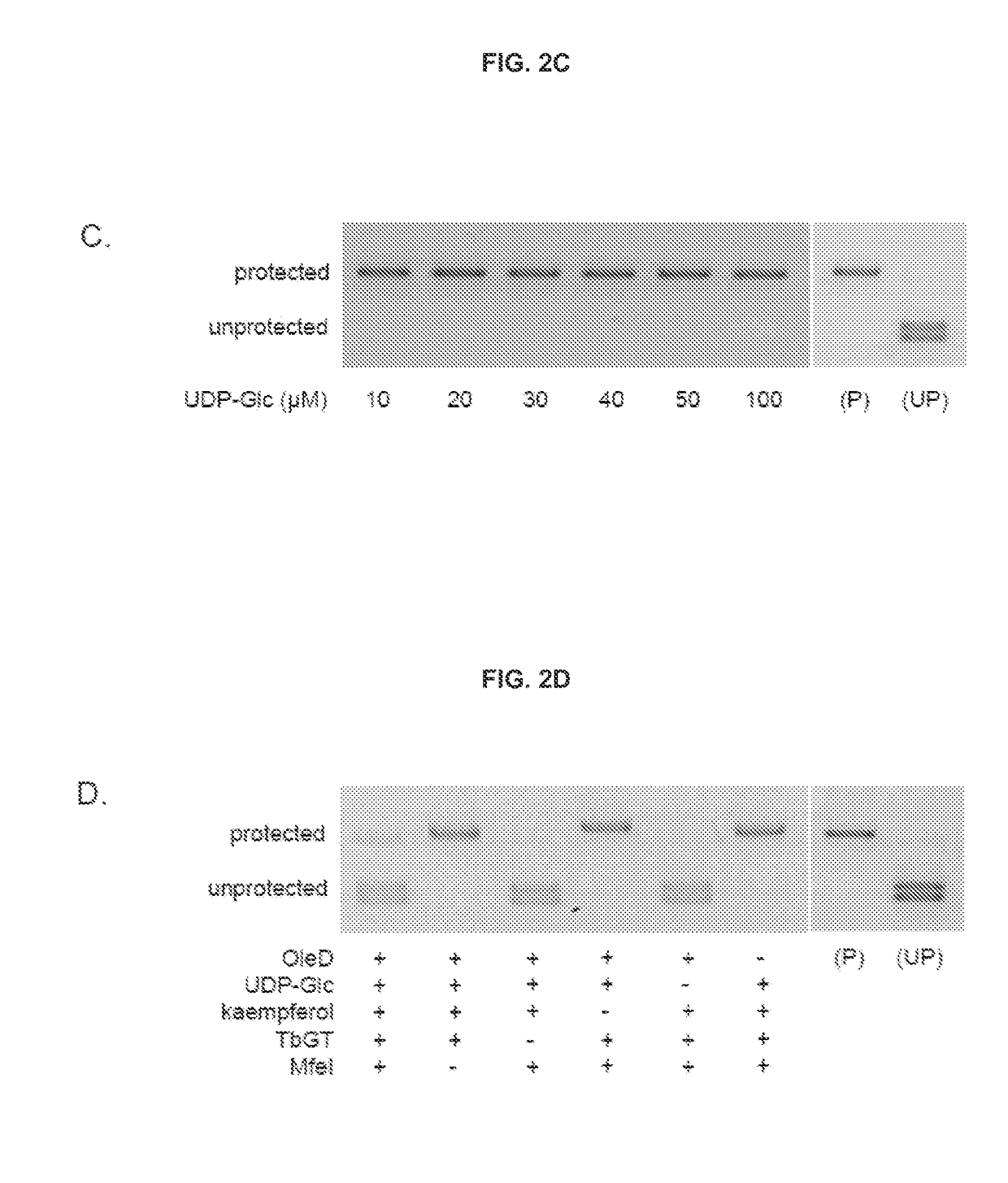Dna-linked enzyme-coupled assays
a technology of enzyme-coupled assays and dna-linked proteins, which is applied in the field of monitoring enzyme reactions, can solve the problems of limiting the low characterization methods, and engineering efforts in synthetic biology and biotechnology, so as to improve throughput and cost of enzyme characterization, and limit large-scale monitoring of enzyme activity.
- Summary
- Abstract
- Description
- Claims
- Application Information
AI Technical Summary
Benefits of technology
Problems solved by technology
Method used
Image
Examples
example 1
Methods
[0115]Enzymes and Reagents:
[0116]T4 Phage β-glucosyltransferase (M0357L), MfeI (R0589L), UDP-Glucose (S2200S), dNTP mix (N0447L), and the PURExpress In Vitro Protein Synthesis Kit (E6800L) were purchased from NEB. The glucosyltransferase was dialyzed against PBS for two hours prior to use. All other reagents were employed without further purification. 5-hydroxymethylcytosine dNTP mix (D1040) was purchased from Zymo Research. Phusion High-Fidelity DNA polymerase (F-530L) was purchased from Thermo Scientific. One Shot TOP10 Chemically Competent E. coli (404003) was purchased from Invitrogen. L-arabinose (A3256), Kaempferol (60010-25 mg), Kaempferol-3-glucoside (68437-5MG), Kaempferol-7-glucoside (18854-1MG), 3-hydroxybenzoic acid (H20008-100G), 3,4-dihydroxybenzoic acid (37580-25G-F), and 5-hydroxyflavone (H4405-250 mg) were purchased from Sigma Aldrich; 4-hydroxyflavone (H-411) was purchased from Indofine Chemical Company Inc.; 7-hydroxyflavone (H0852) was purchased from TCI A...
example 2
S-Adenosyl-L-Methionine (SAM) Coupled to DMTase
[0146]In addition to glycosylation reactions, DLEnCA assays can monitor methylation reactions through the consumption of SAM. Depletion of SAM prevents a DNA methylransferse (DMTase) from modifying the DNA. The probe DNA for monitoring SAM consumption does not contain special bases. It only needs to encode the recognition sequence for a sequence-specific methyltransferase. Methylation of the DNA blocks cleavage by the cognate restriction enzyme. The EcoRI methyltransferase was employed as the DMTase which blocks digestion by EcoRI restriction endonuclease. The assay was tested for monitoring the methylation of 3,4-dihydroxybenzoic acid [3,4-DBA] and Quercetin by the enzymes human S-COMT and Arabidopsis AtOMT1, respectively. The assay involved sequential addition of (1) DNA in cell-free TxT1 mix, (2) Chemical and SAM in 80% DMSO, (3) Probe and DMTase, and lastly (4) EcoRI. Between each reagent addition there is a 3 hour incubation step a...
PUM
| Property | Measurement | Unit |
|---|---|---|
| temperatures | aaaaa | aaaaa |
| pH | aaaaa | aaaaa |
| Temperature | aaaaa | aaaaa |
Abstract
Description
Claims
Application Information
 Login to View More
Login to View More - R&D
- Intellectual Property
- Life Sciences
- Materials
- Tech Scout
- Unparalleled Data Quality
- Higher Quality Content
- 60% Fewer Hallucinations
Browse by: Latest US Patents, China's latest patents, Technical Efficacy Thesaurus, Application Domain, Technology Topic, Popular Technical Reports.
© 2025 PatSnap. All rights reserved.Legal|Privacy policy|Modern Slavery Act Transparency Statement|Sitemap|About US| Contact US: help@patsnap.com



